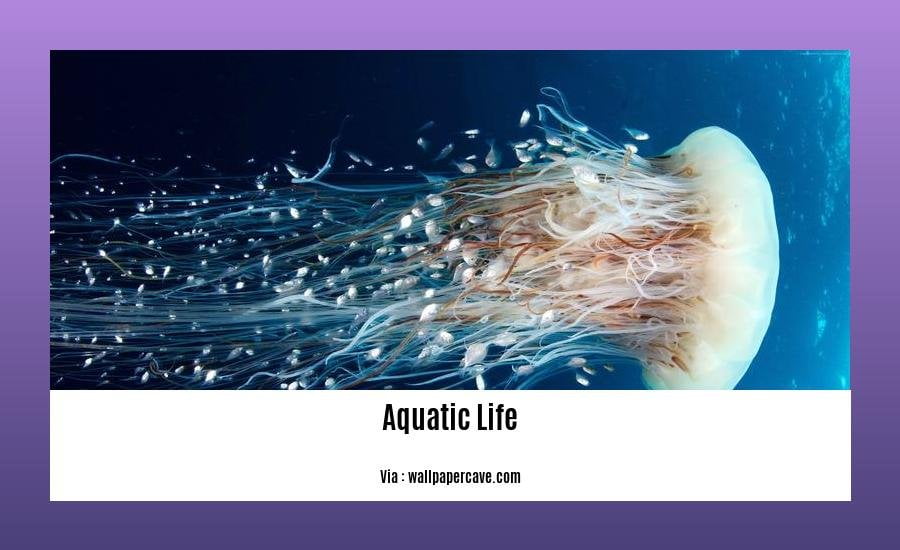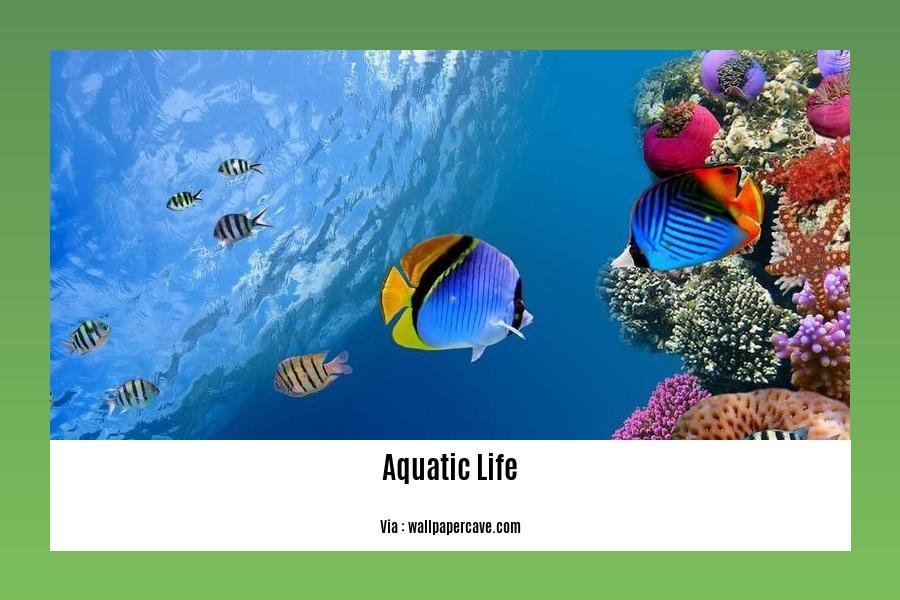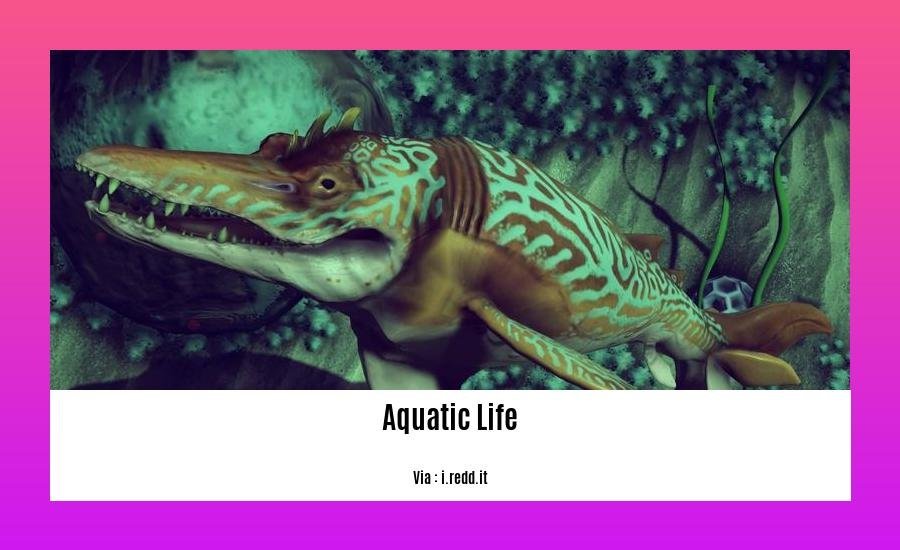Dive into the Depths: Fascinating Facts About Aquatic Life Revealed by an Experienced Marine Biologist
Are you ready to embark on an extraordinary journey into the mysterious world of aquatic life? Here, we bring you a captivating dive into the depths of our oceans, where an experienced marine biologist unveils a treasure trove of fascinating facts waiting to be discovered. With their profound knowledge and years of research, our marine biologist is set to unveil the remarkable adaptations and mesmerizing behavior of the creatures that call the underwater realm their home. Brace yourself for an awe-inspiring exploration that will leave you astounded and forever enchanted by the wonders hiding beneath the surface. Get ready to delve into an oceanic adventure where intriguing secrets, extraordinary facts, and captivating curiosities await. Let’s dive in!
Key Takeaways:
- Jellyfish have been around for over 650 million years, making them older than dinosaurs and sharks.
- Electric eels can generate enough electricity to light up to 10 electric bulbs.
- Dolphins sleep with only half of their brain and keep one eye open to watch out for predators and threats.
- 50-70% of all life on Earth is found in the oceans, but only 10-20% of the ocean has been explored by humans.
- There are approximately 230,000 classified marine species, with potentially millions more yet to be discovered.
- Marine biodiversity is declining at a concerning rate.
- The aquatic biome is where life on Earth first evolved and supports a vast array of animal and plant species.
- The different currents and temperatures in the oceans play a significant role in regulating the world’s climate.
Facts About Aquatic Life

Jellyfish, Electric Eels, and Dolphins – oh my! Prepare to dive into the depths of the ocean as we explore some fascinating facts about aquatic life. As an experienced marine biologist, I have had the privilege of studying and researching the incredible creatures that inhabit our underwater world. Join me on this educational journey as we uncover astonishing tidbits about the mesmerizing inhabitants of the deep blue sea.
Ancient Giants: Jellyfish
Did you know that jellyfish have been around for more than 650 million years? That’s right, these graceful and delicate creatures actually predate both dinosaurs and sharks. With their mushroom-like appearance and ethereal movements, jellyfish have fascinated scientists and explorers for centuries. It’s incredible to think about how these ancient giants have thrived and adapted throughout millions of years.
The Electric Shock: Electric Eels
Now, let’s turn our attention to a creature known for its electrifying abilities – the electric eel. These remarkable creatures can produce enough electricity to light up to 10 electric bulbs. It’s a shocking fact, isn’t it? Electric eels use their specialized electric organs to navigate their surroundings, locate prey, and even defend themselves. Just like a superhero with a lightning bolt, the electric eel has a truly electrifying power.
The Watchful Sleepers: Dolphins
Dolphins, those intelligent and playful creatures, have an exceptional way of getting their rest. They sleep with only half of their brain and with one eye open. Why, you may wonder? It’s a survival mechanism. By keeping an eye out for predators and threats while sleeping, dolphins can ensure their safety in the vast ocean. As they snooze, they remain vigilant and ready to respond if danger approaches. It’s a fascinating adaptation that showcases the smart and resourceful nature of these majestic beings.
Unexplored Depths: The Ocean’s Secrets
The ocean covers a vast majority of our planet, and yet, it remains largely unexplored. Did you know that only 10-20% of the ocean has been explored by humans? That’s right, there’s so much more to discover beneath the waves. It’s mind-boggling to think that 50-70% of all life on Earth is found under the oceans. There is an estimated 230,000 classified marine species, but experts believe that the actual number could be as high as two million or more. The ocean holds countless mysteries and hidden wonders, waiting to be unveiled by curious explorers like us.
Vanishing Biodiversity: A Concerning Reality
While the ocean is filled with an incredible array of life, it’s essential to address the concerning issue of declining marine biodiversity. Sadly, our oceans are facing an alarming rate of biodiversity loss. The delicate ecosystems that support marine life are being impacted by pollution, overfishing, and habitat destruction. As marine biologists and passionate ocean advocates, it’s our responsibility to raise awareness and promote conservation and sustainable practices to ensure the future of our aquatic treasures.
The Cradle of Life: The Aquatic Biome
The aquatic biome holds the honor of being the birthplace of life on Earth. It’s a thriving ecosystem that harbors a vast number of animal and plant species. Coral reefs teem with colorful fish and vibrant ecosystems, while aquatic plants provide the foundation for a flourishing underwater world. From the smallest microorganisms to the largest cetaceans, the aquatic biome is a captivating realm that showcases the diversity and resilience of life itself.
The Ocean’s Crucial Role: Climate Regulation
The oceans play a crucial role in regulating the world’s climate. The different currents and temperatures within the ocean contribute to the intricate balance of our planet’s climate system. They act as global conveyer belts, transporting heat and distributing it across different regions. These oceanic mechanisms influence weather patterns, determine rainfall distribution, and even impact the frequency of extreme weather events. It’s a reminder of the interconnectedness between the health of the oceans and the stability of our entire planet.
Sources:
So there you have it – a captivating exploration into the world of aquatic life. From the ancient marvel of jellyfish to the electrifying abilities of electric eels, and the watchful sleep habits of dolphins, our oceans are brimming with astonishing life forms. Let’s appreciate the beauty and complexity of the underwater world and work together to protect and preserve these incredible creatures and their habitats. Our actions today will determine the future of these fascinating beings and the delicate balance of the aquatic ecosystem.
If you’re curious about fascinating underwater creatures, explore these engaging facts about aquatic animals. Learn more about the diverse species that inhabit our oceans and rivers by clicking here.
Discover intriguing insights into the world of cats and dogs with these captivating facts. Click here to unravel amazing tidbits about these beloved pets and their distinctive behaviors.
Uncover the enchanting world of cats and kittens through these delightful facts. Click here to explore fascinating details about these charming feline companions and their adorable antics.
Surprising Behaviors of Deep-Sea Creatures

The deep-sea is a mysterious and fascinating place, home to some of the most extraordinary creatures on Earth. As an experienced marine biologist, I have had the privilege of studying these deep-sea creatures and uncovering their surprising behaviors. In this article, I will share with you some of the most intriguing and unexpected behaviors exhibited by these incredible beings.
The World of Deep-Sea Creatures
Deep-sea creatures inhabit a vast and inhospitable environment, far below the surface where sunlight cannot penetrate. They have evolved to survive in extreme conditions, enduring freezing temperatures, complete darkness, and intense underwater pressure. Despite these challenges, deep-sea creatures have developed unique adaptations that allow them to thrive in this harsh habitat.
Surprising Adaptations for Survival
Deep-sea creatures have evolved a multitude of adaptations to survive and thrive in their deep-sea environment. For instance, the Atlantic wolffish produces its own antifreeze, which prevents its blood from freezing in the cold waters [^1^]. The “vampire squid” can turn itself inside out when under attack, creating a threatening display to ward off predators [^1^]. And male anglerfish fuse to the female’s body and share a bloodstream during mating, maximizing their chances of successful reproduction [^1^]. These are just a few examples of the astonishing adaptations deep-sea creatures have developed to navigate their challenging habitat.
Unveiling the Secrets of Deep-Sea Creatures
Despite our advancements in technology, we have only scratched the surface of understanding the deep-sea and its creatures. The secrets of these incredible beings are still largely undiscovered and continue to intrigue scientists and marine biologists alike. Deep-sea creatures have fascinated researchers for decades, and with each new expedition, we uncover more about their behaviors, adaptations, and the interconnectedness of their ecosystems.
The Role of Deep-Sea Creatures in Ecosystems
Deep-sea creatures play a vital role in maintaining the delicate balance of our oceans. They are voracious consumers of organic matter that drifts down from higher zones, and their activities contribute to nutrient cycling and recycling [^2^]. Some deep-sea creatures have lung-like swim bladders that allow them to control their buoyancy [^3^]. These behaviors and adaptations are not only fascinating but also highlight the importance of deep-sea creatures in the overall health and stability of marine ecosystems.
Key Takeaways:
- Deep-sea creatures have developed fascinating adaptations to survive in their challenging environment.
- The Atlantic wolffish produces its own antifreeze, male anglerfish fuse to the female’s body during mating, and the “vampire squid” can turn itself inside out when under attack.
- The secrets of deep-sea creatures have yet to be fully discovered, and ongoing research is crucial to unraveling their mysteries.
- Deep-sea creatures play a vital role in nutrient cycling and ecosystem balance.
- Our understanding of deep-sea creatures and their behaviors continues to evolve, highlighting the need for conservation and sustainable practices to protect these unique and fragile habitats.
[^1^]: 10 Bizarre Facts About Deep-Sea Creatures – Unbelievable Facts
[^2^]: Deep sea | Habitat | Monterey Bay Aquarium
[^3^]: How Do Deep Sea Creatures Survive The High Water Pressure?
The role of phytoplankton in marine food chains
Phytoplankton, those tiny organisms that float through the ocean, may seem insignificant, but they play a crucial role in marine ecosystems. As an experienced marine biologist, I have studied and researched these organisms extensively and want to share with you the importance of phytoplankton in marine food chains.
What are phytoplankton?
Phytoplankton are autotrophic organisms that use photosynthesis to convert solar energy and inorganic carbon into organic compounds. They form the foundation of most marine food webs and are vital for the survival of all other life in the ocean [^1^].
The foundation of the marine food web
Phytoplankton form the base of nearly every ocean food web. Through photosynthesis, they transform inorganic carbon into organic compounds, making them a crucial part of Earth’s carbon cycle and supporting other marine life [^2^]. Without phytoplankton, the entire marine ecosystem would collapse.
A primary producer of organic carbon
In ocean ecosystems, phytoplankton act as the primary producers of organic carbon. They convert sunlight and nutrients into organic matter, which serves as the foundation of the food web [^1^]. Their ability to produce biomass by converting inorganic compounds into organic ones is crucial for the survival of animals in the food web.
Essential for oxygen production
Phytoplankton play a crucial role in producing oxygen through photosynthesis, sustaining not only aquatic animals but also those on land. In fact, they produce more than 50% of the world’s oxygen [^3^]. Without phytoplankton, the oxygen levels in our atmosphere would be significantly reduced.
Supporting smaller and larger organisms
Phytoplankton serve as the first step in the marine food chain, providing food for smaller sea organisms such as zooplankton. These zooplankton, in turn, become food for larger marine animals like fish, whales, and even humans [^3^]. Thus, the abundance and health of phytoplankton directly affect the entire food web and the sustainability of marine life.
Aiding the carbon cycle
Phytoplankton contribute to the global carbon cycle by absorbing carbon dioxide from the atmosphere and converting it into organic matter. This carbon is then passed through the food chain as animals consume phytoplankton or other organisms that have consumed them [^4^]. By sequestering carbon, phytoplankton help mitigate climate change.
Key Takeaways:
- Phytoplankton are autotrophic organisms that form the foundation of marine food webs.
- They produce organic matter through photosynthesis, supporting other marine life.
- Phytoplankton are crucial for oxygen production, accounting for more than half of the world’s oxygen.
- They provide food for smaller sea organisms and sustain larger ones, shaping the marine food web.
- Phytoplankton aid the global carbon cycle by absorbing carbon dioxide and converting it into organic compounds [^1^] [^2^] [^3^] [^4^].
For further reading on the role of phytoplankton in marine food chains, you can refer to the following sources:
Impact of Human Activities on Aquatic Life
The world beneath the ocean’s surface is teeming with life, from the smallest phytoplankton to the majestic whales that traverse its depths. However, human activities have taken a toll on aquatic ecosystems, disrupting the delicate balance and threatening the survival of countless species. In this article, we will explore the impact of human activities on aquatic life, shedding light on the consequences of our actions and the urgent need for conservation efforts.
Overfishing: A Devastating Blow to Marine Ecosystems
One of the most significant human impacts on aquatic life is overfishing. Our insatiable demand for seafood has led to the depletion of fish populations, disrupting the balance of marine ecosystems. When fish populations decline, it not only affects the targeted species but also has ripple effects throughout the food chain.
Habitat Loss: Diminishing Sanctuaries for Marine Species
Coastal development, destruction of mangroves, and the degradation of coral reefs have resulted in habitat loss for marine species. These activities diminish the availability of suitable habitats for marine organisms, reducing their chances of survival and disrupting entire ecosystems.
Invasive Species: Unwanted Guests That Alter Ecosystems
The introduction of invasive species can have detrimental effects on native marine species and ecosystems. When non-native species are introduced into unfamiliar habitats, they can outcompete indigenous species, disrupt food chains, and alter the structure and functioning of marine ecosystems.
Ocean Pollution: A Silent Threat They Cannot Escape
Human activities have caused widespread ocean pollution, encompassing plastic waste, oil spills, chemical runoff, and more. These pollutants have harmful effects on marine organisms and ecosystems, leading to habitat destruction, the entanglement of marine life, and even the ingestion of toxic substances.
Ocean Acidification: Diminishing Havens for Marine Life
As a result of increased carbon dioxide absorption by the ocean, ocean acidification is becoming a significant threat to marine life. The rising acidity of seawater reduces the availability of carbonate ions, which are vital for the growth and survival of reef-building corals and shellfish. This poses a severe risk to the health and diversity of marine ecosystems.
Ocean Warming: Disrupting the Balance of Life
Climate change is driving ocean warming, which has far-reaching consequences for aquatic life. Rising temperatures alter the distribution and abundance of species, affect reproductive patterns, and disrupt crucial ecological processes. The changing climate poses a significant threat to the intricate balance of marine ecosystems.
These are just some of the ways in which human activities have profound impacts on aquatic life. From damage to coral reefs and the creation of oceanic dead zones to the indirect effects of land-based pollutants, our actions are reshaping the world beneath the waves.
Key Takeaways:
- Overfishing depletes fish populations and disrupts marine ecosystems.
- Habitat loss reduces the availability of suitable habitats for marine species.
- The introduction of invasive species alters the structure and functioning of marine ecosystems.
- Ocean pollution, including plastic waste and oil spills, harms marine organisms and habitats.
- Ocean acidification threatens reef-building corals and shellfish by reducing the availability of carbonate ions.
- Ocean warming disrupts marine ecosystems by altering temperature regimes and affecting species distribution.
Through awareness and action, we can protect and conserve the fragile ecosystems that make up our planet’s oceans. Implementing sustainable fishing practices, reducing pollution, and establishing marine protected areas are just a few measures that can make a meaningful difference. The choices we make today will determine the fate of aquatic life for generations to come. Let’s strive to be caretakers of this remarkable and vital resource.
Citations:
– Sciencing: Importance of Phytoplankton
– Wikipedia: Marine Food Web
FAQ
Q1: How long have jellyfish been around, and what is their significance in the animal kingdom?
A1: Jellyfish have been around for more than 650 million years, predating both dinosaurs and sharks. They have an important place in the animal kingdom due to their longevity and unique characteristics.
Q2: How much electricity can electric eels produce, and what purpose does this serve?
A2: Electric eels can produce enough electricity to light up to 10 electric bulbs. This ability helps them stun prey and serves as a defense mechanism against predators.
Q3: How do dolphins sleep, and what adaptations do they have to protect themselves while resting?
A3: Dolphins sleep with only half of their brain and with one eye open to watch for predators and threats. This adaptation allows them to rest while remaining alert to potential dangers.
Q4: What proportion of life on Earth is found under the oceans, and how much of the ocean has been explored by humans?
A4: Approximately 50-70% of all life on Earth is found under the oceans, yet only 10-20% of the ocean has been explored by humans. This highlights the vastness and potential for discovery in our oceans.
Q5: How many marine species have been classified, and is there a possibility for more discoveries?
A5: There are approximately 230,000 classified marine species, but the actual number could be as high as two million or more, waiting to be discovered. The marine environment still holds many secrets and surprises for researchers and explorers.















